2-BROMO-3,3,3-TRIFLUOROPROPENE
- CAS NO.:1514-82-5
- Empirical Formula: C3H2BrF3
- Molecular Weight: 174.95
- MDL number: MFCD00077469
- EINECS: 627-872-0
- SAFETY DATA SHEET (SDS)
- Update Date: 2024-12-18 14:08:57
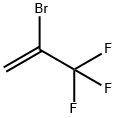
What is 2-BROMO-3,3,3-TRIFLUOROPROPENE?
Chemical properties
liquid
The Uses of 2-BROMO-3,3,3-TRIFLUOROPROPENE
It is used as intermediate in production of organ fluorine compounds & as a monomer in fluoropolymer production. It is used as a trifluoromethylated synthetic building block for the synthesis of trifluoromethyl-substituted molecules.
What are the applications of Application
2-Bromo-3,3,3-trifluoro-1-propene is a versatile CF3 building block
General Description
2-Bromo-3,3,3-trifluoro-1-propene can be added to N2 gas in order to enhance its fire suppression efficiency.
Properties of 2-BROMO-3,3,3-TRIFLUOROPROPENE
| Boiling point: | 29-30 °C(lit.) |
| Density | 1.686 |
| vapor pressure | 82kPa at 25℃ |
| refractive index | n |
| Flash point: | ~−10 °F |
| storage temp. | 2-8°C |
| form | Liquid |
| color | Clear colorless |
| Specific Gravity | 1.686 |
| Water Solubility | Soluble in most organic solvents, immiscible with water. |
| Stability: | Stable, but extremely flammable. Incompatible with strong oxidizing agents. |
| CAS DataBase Reference | 1514-82-5(CAS DataBase Reference) |
| EPA Substance Registry System | 1-Propene, 2-bromo-3,3,3-trifluoro- (1514-82-5) |
Safety information for 2-BROMO-3,3,3-TRIFLUOROPROPENE
| Signal word | Warning |
| Pictogram(s) |
 Exclamation Mark Irritant GHS07  Health Hazard GHS08 |
| GHS Hazard Statements |
H315:Skin corrosion/irritation H319:Serious eye damage/eye irritation H335:Specific target organ toxicity, single exposure;Respiratory tract irritation H341:Germ cell mutagenicity |
| Precautionary Statement Codes |
P201:Obtain special instructions before use. P202:Do not handle until all safety precautions have been read and understood. P261:Avoid breathing dust/fume/gas/mist/vapours/spray. P280:Wear protective gloves/protective clothing/eye protection/face protection. P304+P340:IF INHALED: Remove victim to fresh air and Keep at rest in a position comfortable for breathing. P305+P351+P338:IF IN EYES: Rinse cautiously with water for several minutes. Remove contact lenses, if present and easy to do. Continuerinsing. P308+P313:IF exposed or concerned: Get medical advice/attention. P405:Store locked up. P501:Dispose of contents/container to..… |
Computed Descriptors for 2-BROMO-3,3,3-TRIFLUOROPROPENE
| InChIKey | QKBKGNDTLQFSEU-UHFFFAOYSA-N |
New Products
Tert-butyl bis(2-chloroethyl)carbamate 4-Methylphenylacetic acid N-Boc-D-alaninol N-BOC-D/L-ALANINOL 3-Morpholino-1-(4-nitrophenyl)-5,6-dihydropyridin- 2(1H)-one Furan-2,5-Dicarboxylic Acid Tropic acid 1,1’-CARBONYLDIIMIDAZOLE DIETHYL AMINOMALONATE HYDROCHLORIDE R-2-BENZYLOXY PROPIONIC ACID 1,1’-CARBONYLDI (1,2-4 TRIAZOLE) N-METHYL INDAZOLE-3-CARBOXYLIC ACID (2-Hydroxyphenyl)acetonitrile 4-Bromopyrazole 5-BROMO-2CYANO PYRIDINE 5,6-Dimethoxyindanone 5-broMo-2-chloro-N-cyclopentylpyriMidin-4-aMine 2-(Cyanocyclohexyl)acetic acid 4-methoxy-3,5-dinitropyridine 2-aminopropyl benzoate hydrochloride 1-(4-(aminomethyl)benzyl)urea hydrochloride diethyl 2-(2-((tertbutoxycarbonyl)amino) ethyl)malonate tert-butyl 4- (ureidomethyl)benzylcarbamate Ethyl-2-chloro((4-methoxyphenyl)hydrazono)acetateRelated products of tetrahydrofuran


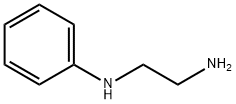
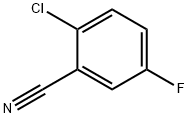
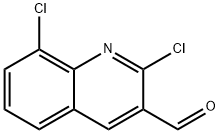


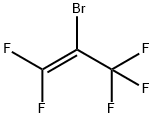
You may like
-
 2-Bromo-3,3,3-trifluoro-1-propene CAS 1514-82-5View Details
2-Bromo-3,3,3-trifluoro-1-propene CAS 1514-82-5View Details
1514-82-5 -
 1975-50-4 98%View Details
1975-50-4 98%View Details
1975-50-4 -
 2-HYDROXY BENZYL ALCOHOL 98%View Details
2-HYDROXY BENZYL ALCOHOL 98%View Details
90-01-7 -
 2-Chloro-1,3-Bis(Dimethylamino)Trimethinium Hexafluorophosphate 221615-75-4 98%View Details
2-Chloro-1,3-Bis(Dimethylamino)Trimethinium Hexafluorophosphate 221615-75-4 98%View Details
221615-75-4 -
 61397-56-6 CIS BROMO BENZOATE 98%View Details
61397-56-6 CIS BROMO BENZOATE 98%View Details
61397-56-6 -
 14714-50-2 (2-Hydroxyphenyl)acetonitrile 98+View Details
14714-50-2 (2-Hydroxyphenyl)acetonitrile 98+View Details
14714-50-2 -
 118753-70-1 98+View Details
118753-70-1 98+View Details
118753-70-1 -
 733039-20-8 5-broMo-2-chloro-N-cyclopentylpyriMidin-4-aMine 98+View Details
733039-20-8 5-broMo-2-chloro-N-cyclopentylpyriMidin-4-aMine 98+View Details
733039-20-8
Statement: All products displayed on this website are only used for non medical purposes such as industrial applications or scientific research, and cannot be used for clinical diagnosis or treatment of humans or animals. They are not medicinal or edible.